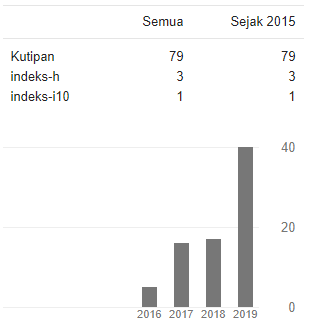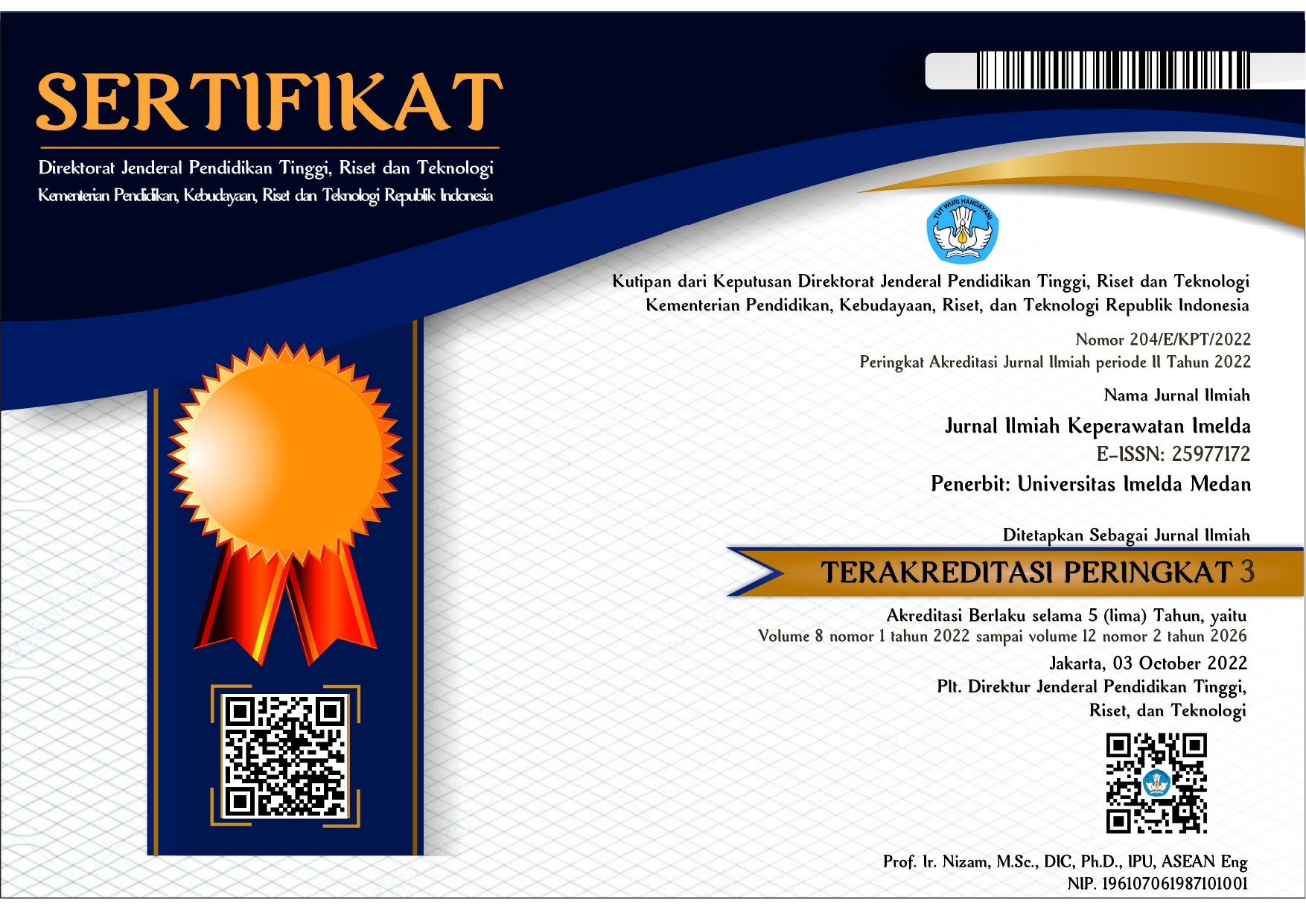PENGARUH TERAPI NEBULIZER TERHADAP FREKUENSI NAPAS PADA PASIEN PENYAKIT PARU OBSTRUKTIF KRONIK (PPOK)
DOI:
https://doi.org/10.52943/jikeperawatan.v8i1.682Keywords:
Nebulizer therapy, COPD, Respiratory rateAbstract
Physiological changes due to inflammation in COPD patients significantly reduce the low level of carbon dioxide in the blood which causes shortness of breath with increased respiratory rate, so the importance of therapy that quickly dilutes secretions, clears the airway, and weakens the respiratory tract such as nebulizer therapy. This study aims to identify the effect of nebulizer therapy on respiratory rate in COPD patients. The research design used was a quasi-experimental pre and post test one sample test. The sample in this study amounted to 49 respondents by calculating the respiratory rate through the inspection method. The test used was the Wilcoxon signed rank test. The results of this study showed that there was an effect before and after nebulizer therapy on respiratory rate in COPD patients with value = 0.000. Based on the research, it can be concluded that the action of nebulizer therapy greatly affects the decrease in respiratory rate in COPD patients. It is recommended that nurses perform nebulizer therapy with the right frequency and duration for the successful effect of decreasing respiratory frequency.
Downloads
References
Global Initiative for Chronic Obstructive Lung Disease (GOLD). (2017). Executive summary global strategy for the diagnosis, management, and prevention of chronic obstructive pulmonary disease.
Ikawati, Z. (2011). Penyakit Sistem Pernafasan dan Tata Laksana Terapinya. Yogyakarta: Bursa Ilmu.
Kemenkes RI, (2017). Riset Kesehatan Dasar (RISKESDAS): Data dan Informasi Tahun 2018. Jakarta: Balitbang. Profil Kesehatan Indonesia.
Lisa, T. G., & Saad, A. (2015). Profil Penderita Penyakit Paru Obstruktif Kronik (PPOK) yang Dirawat Inap di RSUD Arifin Achmad Provinsi Riau Tahun 2013. Jurnal Online Mahasiswa (JOM) Bidang Kedokteran, 2(2), 1-13.
Luo, et al. A Modified Nebulization Modality Versus Classical Ultrasonic Nebulization and Oxygen-Driven Nebulization in Facilitating Airway Clearance in Patients with Acute Exacerbation of Chronic Obstructive Pulmonary Disease : A Randomized Controlled Trial. http://dx.doi.org/10.3978/j.issn.2072-1439.2015.17.12.
Muttaqin, A. (2018). Buku Ajar Asuhan Keperawatan Klien dengan Gangguan Sistem Pernapasan. Jakarta: Salemba Medika.
Penghimpunan Dokter Paru Indonesia.(2011). Penyakit Paru Obstruktif Kronis (PPOK) Pedoman Diagnosis & Penatalaksanaan di Indonesia. Jakarta: Perhimpunan Dokter Paru Indonesia.
Slamet, H. et al .(2010). Buku ajar ilmu penyakit paru. Surabaya: Departemen ilmu penyakit paru FK Unair-RSUD Dr Soetomo.
Smeltzer, Suzane C., & Bare, Brenda G., (2008). Buku Ajar Kesehatan Medikal Bedah, Volume 2, Edisi 8. Jakarta : Buku Kedokteran EGC.
Supriyatno, B., (2010). Terapi Kombinasi pada Serangan Asma Akut Anak. Majalah Kedokteran Indonesia Vol.60, No.5 pp 232.
Syutrika, A., Sondakh., Onibala, F., & Nurmansyah, M. (2020). Pengaruh Pemberian Nebulisasi Terhadap Frekuensi Pernapasan Pada Pasien Gangguan Saluran Pernapasan.
WHO. (2016). World COPD Day in Your Country. http://www.Goldcopd.Org/wed inyoiurcountry.html?country_id=55&submit= Go.









